Coincident Statement Phono Preamplifier
List Price: $5,495
Review by
Michael Peshkin
First, many thanks to Israel Blume, head guy at Coincident for providing the Statement Phono Preamp for this review.
Stereomojo -
-----------------------------------------------



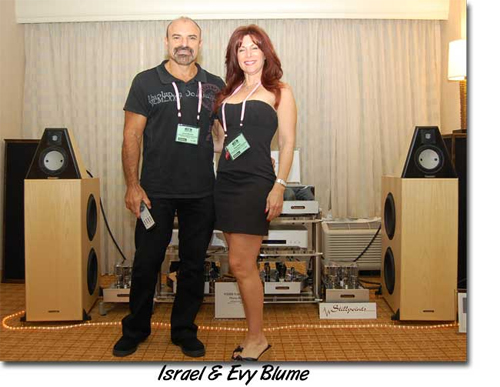
The first things you notice about the Coincident Statement Phono Preamp is that it looks like two preamps because there are two seperate units or chassis that comprise it. The first is the main unit that has all the controls and the second is a huge power supply that feeds it. If it's one thing we know about high-end audio, it's that power supplies make all the difference in the world. That's why you often see everything from turntables to amplifiers offer optional, upgraded power supplies so you can choose the level of performance to fit your wallet. Blume offers no options there since the Statement is a flat-out ultimate, no compromise, um, statement of his ability to best phono preamp on the planet.
According to Blume, "The Coincident Statement Phono Preamplifier is a high gain, all tube unit employing the highest quality MC step up transformers to accommodate virtually all moving coil cartridges. Due to employing only 2 all tube gain stages, high gain is achieved with low noise. The RIAA curve is passive, zero feedback utilizing the closest tolerance resistors and polystyrene capacitors to obtain accuracy of less than .1 db deviation from 20hz – 20khz. The build quality of the Statement Phono is the finest available. It was designed with no cost restraints. It represents an all out assault on the state of the art. The design goal of the Coincident Statement Phono Preamplifier was to provide the purest, most transparent method of playing vinyl. There is no Phono Stage in existence that surpasses its combination of performance and construction. At its selling price, The Statement Phono has no peer".
That's pretty hard to argue with. I don't know of any other unit that offers the quality fit and finish, especially the mirror-like polished stainless steel cladding that is slathered over every square inch of both boxes. There are many if not most components at much more pricey heights that offer nothing close to that. Blume also goes to the extreme of implementing two separate volume controls and the circuitry that goes with them for two completely independent channels.

He goes on to say, "All the coupling capacitors are the finest and highly expensive Teflon Film and Foil. All power supply caps are polypropylene, while many multiples the price of commonly used electrolytics, sound far purer and more transparent. The 66 db overall gain coupled with low output impedance and the use of the finest discrete resistor volume pots allows the Statement Phono Preamplifier to be directly connected to an amplifier without the use of a line stage".
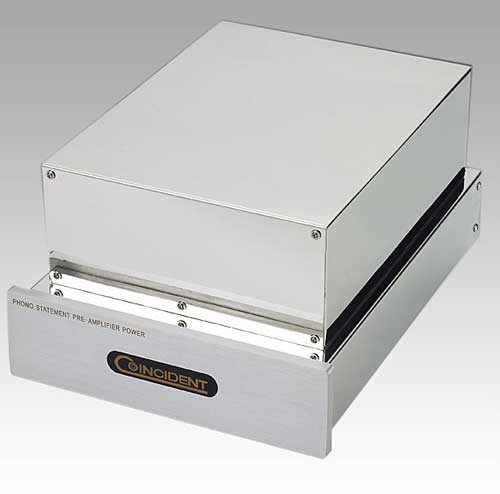
Did you catch that last part? You can "go direct" with no need of an additional preamp to an integrated or power amp. As we'll see in a minute, the Statement also includes and extremely high quality line-level input for your CD player, computer audio outputs, music server or any other line level component. Therefore, if you don't have a bunch of other sources, well, more than a turntable and one other, you can eliminate the need for a costly line preamp altogether! That ehnances the value factor of the Statement significantly.
It should be pointed out that there is no remote control offered. Since there are two volume pots, you needs two motors and even one would compromise the quality of the sound, and as it's already been stated, the Statement is not about compromise.
About the power supply, Israel tells us, "The Coincident philosophy with regards to power supply is that if it's not powerful enough to power a 100 watt amplifier on its own, it will be compromised when being used in a preamp. Although the signals of a phono stage are in the tiny mv range, the power supply must possess stiff enough and possess sufficient energy storage to ensure no supply ripples or clipping artifacts to damage that delicate signal. With an over built power supply, the output impedances are kept low, ac noise is minimal, transformer hum is non-existent and the unit can be run very conservatively which results in rock solid reliability and prolonging the longevity of component parts".
Hmmm..what I said...
"The Statement Power supply involves not only ultra stiff regulation through 4 different stages of rectification, the energy storage is large enough to power a 100 watt amplifier", he continues. "The power supply is dual mono with double transformers per channel. One transformer is for low level filament voltage, while the other transformer has enormous capacity to deal with high voltage. All power supply capacitors are the purest sounding and finest quality polypropylene, not the standard, sonically inferior electrolytics. All connections are hardwired with the total absence of circuit boards or connecting strips which are sonically inferior and deteriorate over time. The supply is housed in a heavy gauge, non resonant stainless steel shielded chassis. The power supply weighs 41 lbs.No expense was spared in the creation of the power supply which is the foundation for the Coincident Statement Phono Stage. Any compromises here will impair the ultimate performance of the preamp which we consider unacceptable since the design goal was to create the finest sounding Phono Stage in existence".
How much does this thing cost again? $5,495?
THE LINE INPUT
Before we get to the main course of playing LP's, let's take a look at the line input. While it's not the main feature, it is an important one, so lets play some cee-dees!~
I’d be rich if I got paid for the times I’ve switched out DACs between my two systems. Getting in the Coincident Statement phono stage, which just happens to have a line stage input, made me move the DAC I had in for review and my Eastern Electric Minimax DAC so often it became sort of a game…the DAC of the Hour game show.
Let me quickly state the line stage of the Coincident is quite good, presenting a very wide soundstage and very three dimensional images. Our Publisher reviewed the sister Statement Linestage which looks almost identical to the this phono stage with it's glistening, polished, mirror-like finish on it's dual chassis. He said it was the best he'd ever heard. The line level input here is is extremely close to the quality of the unit he reviewed, constituting a tremendous value combination.
I played one of Dave Grisman’s Tone Poems via a shiny silver discband was amazed at how sharply defined the images were; the sound of the vintage instruments equaling (or bettering) the sonic attributes. Using the Minimax and my Audio Alchemy CD Pro, I can’t imagine better sound or more believable music making.
Grisman is a lot of fun to listen to, and his Tone Poems are among his best works. The fact they are HDCD and thankfully, the Alchemy recognizes HDCD, makes for a wonderful listening experience. I played the Tone Poems III with steel guitars…incredible CD! The rhythms Grisman and the other musicians capture in some very familiar tunes sound true to my ears. I’m not listening to sound rather, I’m actually listening to a performance captured in time, delivered with precision and care by Grisman’s fine production values and the superb electronics the three DACS offered up and the Coincident delivers:
Trueharmonix U2
Eastern Electric Minimax DAC
Anedio DAC
Playing some Jazz, I pulled out a sleeper in my CD collection, Cecil Payne and Duke Jordan (Classic Records Prevue CDPR13). This CD is one I’d totally forgotten about and had not played in years. It was revealed in a manner that made me wonder why I hadn’t played it; it is a wonderful Jazz recording! Payne’s baritone sax growls and dances. Jordan walks up and down the keys of his piano as if he’s taking a stroll in an area he frequents and knows better than he knows much of anything else. His command of the keyboard is quite impressive and the line stage of the Coincident revealed the nuances I wish to hear to make a listening experience satisfying.
An example of that is with the wonderful 8 disc set I just received, Bill Evans Trio, The Last Waltz (Milestone 8MCD-4430-2). The soft, sure touch of Evans’ fingers on the keys; the control of the Baldwin provided for him the nights of these concerts including his pedal-work makes this set eminently worthwhile to own, and the Coincident doesn’t get in the way at all. I was thrilled with every single note.
His bassist may well have been his twin brother, the touch he has on the strings of his instrument is as delicate as Evans’ and the Coincident definitely allows the subs of the Infinity Preludes to show how low they can go. His drummer, too, has a light control of his sticks, never overpowering the music Evans’ played, supporting him beautifully. When the music called for punctuation, he was willing and able to apply all the commas, question marks and exclamation points needed to elucidate Evans’ sentences.
The Coincident’s line stage, with the CDs of that set, throws a soundstage that is very three dimensional, of believable width in my room. Its strong point is not the solar flares some people wish for from a piece of equipment. It merely takes the music and presents it with rhythms intact, the colors of each instrument clear; bright when needed, shaded when Evans’ mood called for it. Basically stepping out of the way and not highlighting anything that wasn’t meant to be so.
Reaching far back into the CD collection, I chose some tried and true CDs. I really wanted to hear an instrument I’d heard on Bonga, Angola ’72 Tinder 42860622, the guiro. It is all attack, a very simple rhythm instrument that has revealed some shortcomings in some equipment, amazed me with others. Simply a ribbed stick that is rubbed with another stick, it has no tonal colorations, nothing but the rhythmic attack the musician chooses to produce.
I’ve always wanted to find other music with that instrument, but have failed so far. Tinder record company apologizes for the sound, “The inferior sound of analog tapes.” I saw that on the liner notes and knew I had to buy it. Bonga’s voice is so full of pain, but of wonder, too. I do not understand a single word of Angolan and I’m betting you will know of what he sings when you hear the anguish in his voice as well as I do.
In the past, there was some gear I’d heard that softened the roughness of Bonga’s voice, thus weakening the messages he sends. I always felt the Bonga CD laid a magnifying glass over the gear’s sound and revealed anything and everything we listen to music for with it’s not optimal digital sound. Bonga’s voice is what my wife might refer to as ultra-masculine. Guttural, growly and filled with emotion, his voice and the instrumentation combine to give me as a listener not only a great experience musically, but when the music lover’s yarmulke comes off and the reviewer’s top hat is put on, I am able to hear some sonic artifacts, both good and bad, that other CDs do not reveal. All of Bonga’s emotions are laid bare with the Statement’s line stage.
THE MAIN COURSE
But I really wanted to hear what that phono stage would sound like. A good friend of mine, the gifted Jim Howard of Applied Fidelity, who re-manufactured the bearing of my VPI HW19 Mk. IV, vehemently states that music should growl when it is supposed to do so. I laughed when he said that to me, but he’s absolutely correct! If the growl is smoothed out, softened, made pretty then the meaning is lost. There cannot be heart where there is no angst; we cannot receive the meaning, the desire within the music if it is overlaid with silk when burlap is what we should feel next to our skin.
The Coincident Statement hides nothing. It surely isn’t sterile or barren of emotion and there is no softening of leading transients I hear with some music, so much so that it makes me get up too often to check my tracking angle. With the Statement, I just sit and smile. No need to wonder if my amps are smoothing things a bit, that my speakers are at fault; the Coincident is thunder, lightening and when it needs to be, a warm spring day.
I listened to Joni Mitchell’s For the Roses, as much as I love the music, I use it as a tool, listening for chestiness. I stress this often, vocalists, whether make or female, sings from their diaphragm. If Joni's voice is colored by an amp, preamp, or speakers and she sounds as if she is singing deeply from her chest, that gear is to be avoided like bad sushi.
Birth control options aside, Joni is so beautifully feminine; the Statement allows her loveliness to be heard in a manner that makes men think with the wrong head. The LP is rather well recorded; we hear Joni’s lips, her tongue forming the lyric as she tells her story. I can hear her inhalations but they are not exaggerated in any way, they’re simply part of the recording.
But it is when I listen to Ella Fitzgerald I hear all of the nuances that make her the great singer she was. Her control of a microphone is surpassed only by the control she has of her instrument, for Ella had a voice as versatile as any piano, trumpet or clarinet and we hear that with good gear like the Statement. That growl I wrote about is there in all colors, all meanings. And Ella can growl!
Listening to The Cole Porter Songbook Ella’s voice has an almost uncanny clarity; that from a woman who is the essence of a singer with a clean, clear vocal instrument. I realize the cartridge is responsible for what I’ve heard, but the Coincident allows that cartridge to really show its stuff, revealing colors within the recording but adding none of its own.
On a whim I pulled out Bruce Springsteen and the E Street Band and listened to Born to Run. Let me assure you that the Coincident Statement does the masculine thing quite well, too, while still revealing Springsteen’s energy and swagger.
One record I played made is the type of recording that makes you wonder why anyone needs surround sound and more than two speakers. Pat Metheney’s As Falls Wichita, So falls Witchita Falls (ECM 1-1190) has spatial cues the Coincident Technologies Statement phono stage revealed that had me whipping my head around because I heard sound from strange directions, looking to see if someone was coming into the room speaking to me as they did. There were sounds that came from above my head, sharply to my right, sharply to my left, directly above and behind me…a superbly fun listen, spatial cues abounding. You will definitely wonder why anyone would spend money on more than two speakers!
I’d heard some of this with the other phono stages I’d had in my listening room, but never anything like that!
Relaxing with some harpsichord music from the Smithsonian box set, James Weaver playing the harpsichord I found the Statement separated the notes played with astonishing cleanliness. Harpsichord can often sound like smeared jam, each note imposing upon the next. Granted, that is pretty much the sound of a harpsichord, you could never say each note is produced as sharply as each note on a great grand piano, for instance but there is smeared and shmeared. I want my cream cheese shmeared across the bagel and I want my harpsichord with that richness, fullness and again clarity the Statement gives to that recording.
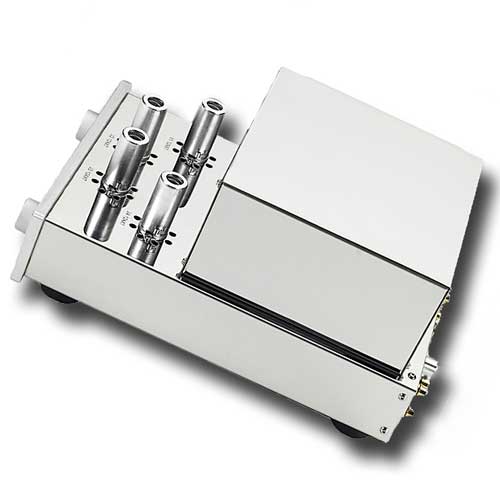
Jimmie Smith’s The Cat has been spending a lot of time on the turntable. I get into a record sometimes and play it four, five times and more because of something it does to my music mojo. From the very first note you know it is Jimmy Smith’s organ, his style is eminently identifiable. Yet, as well as I know this recording, every time I play the LP with the Statement I hear something new flowing from Jimmy’s fingers. That is what always fascinated Alfred Lion of Blue Note records and the Statement shows that better than most phono stages can, without any doubt.
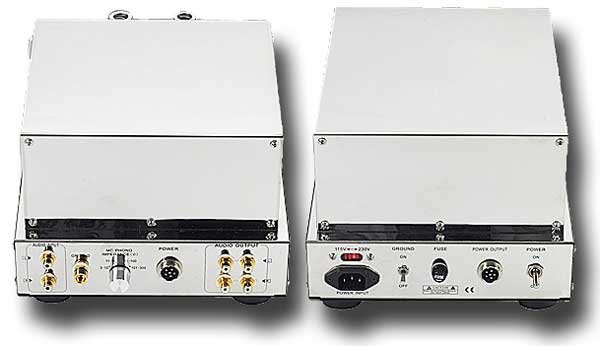
Do I hear magic with every LP? That is the problem, I don’t. Blame it on the recording; blame it on the electric feed from a company that should be in any business except power, Allegheny Power Company being the American Motors Gremlin of power companies. In a diligent search for what I didn’t like in the Statement, this was the best try, feeble as it is.
No real magic, yet a great listen is Toussaint’s self titled LP (Sceptor); nowhere near the recording Bright Mississippi is, 35 (?) years later. That is a magically recorded LP set and it is fabulously delivered through the Coincident. The ensembles playing Toussaint’s music blend beautiful yet are separated, each instrument occupying its own space.
The Coincident is the sort of gear that, as you use it in your system, you discover its versatility. Mute switch? I’ve used the mute on my preamp about .0003% of the time I’ve spent listening to it over the years I’ve owned it. The mute of the Coincident is a hefty toggle switch that simply closes down everything. The soft pop I get from turning the motor of my turntable off; changing out phono ICs to see which ones may work best with the Coincident and the Monarchy amps and switching over to the line stage (also a hefty toggle switch) are all reasons to use a mute, but for some reason I don’t think to do it with the Anthem. It’s every bit as accessible, but often to my chagrin, I do not. I found I began using the mute in lots of situations I previously would not have bothered and of course, should have done so.
Changing LPs. Why would I mute? Well, static charges are the most obvious reason to do so. As I stated, somehow the Statement makes me do things I should have been doing, not because I necessarily have to but because I should and the Statement makes it easy to be safe!
The load settings are on the rear. I wondered why not the front? There are lots of reasons, wiring layout being a good guess, but for me it kept me from going nutso over which setting was correct. I changed it only three times and then left it alone, never questioning it again. Had the switch been on the front of the cabinet, I know I would have kept playing with what was optimal instead of simply enjoying the music and enjoy I did. This is a state of the art phono preamp with everything designed for absolute sonic performance. Voltages in a phono stage are microscopic so signal paths become even more critical than in amps or preamps. They must be as short as possible to eliminate noise and grunge from not only power companies, but RF from other components, wireless phones, refrigerators and the like as well as internal and external vibrations. Many phono stages have tiny little dip swtiches that are a pain in the butt, and they are often located inside the unit making it necessary to open the box every time a change is needed. I'd take a single knob on the back anytime ~ publisher.

While not anywhere near to what I’d say was inexpensive, I believe you get more for your $5,499 than anyone deserves. It is called the Statement because it is just that; a no compromise, state of the art Statement as to how great phono playback can be, plus you get the luxury of a very fine line level input to boot that's probably worth the cost of the unit all on its own - it's that good! If you only have a turntable and a digital source, you need nothing more.
Obvioulsy, this product is not for everyone, suited for those seek no compromise in the sound of their precious and significant LP collection, this is not something you'd buy merely to transfer your 80's collection to mp3. If you do desire the ultimate in LP playback, sell your linestage, buy this and upgrade your table, arm or cartridge. Or, if you already have already attained the heights in those areas, save some money and buy more music!
If you absolutely must have a remote control, that could be a deal breaker because the Statement forgoes one in the quest for absolute sonic quality
I will definitely miss it when it leaves my home, more so than with much of the superb equipment I’ve reviewed of late. Phono lovers rejoice, the Statement is here!
Publisher's note: Because the Coincident Statement Phono preamp exhibits such extreme quality and functionality from finish to ultimate sound quality, we enthusiastically bestow on it and creator Israel Blume our...
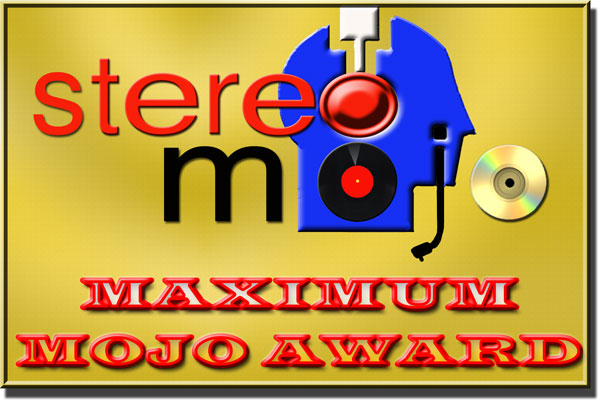
The Coincident Statement also sets the bar very high for our annual "Product of the Year' awards for 2011.
Specifications:
Frequency Response: 10hz – 25khz +/- .1 db
Gain: 66 db- MC
Output Impedance: 250 ohms
Maximum Voltage Output: 30 V
Impedance: 3-10, 11-30, 31-100, 101-300 – MC
Phase: In phase
Dimensions: 203mm x 260mm x 390mm – Power Supply and Phono
Weight- Power Supply – 18.5 kilos (40.4 lbs)
Phono Stage – 9.5 kilos (20.9 lbs)
AC Voltage: User Selectable – 115V or 230V
Tubes- 4-12AX7- Reissued Mullards are included.
Price - $5499 US
User Features:
Finest Discrete Resistor Dual Mono Volume Pots - Allows for Direct Connection to Amplifier without the Use of a Line Stage and corrects for channel imbalances;
Dual Pairs of RCA Outputs- Allows for Biamping;
Impedance Selector-Optimizes all moving coil cartridges;
Mute Switch – Conveniently mutes signal when changing records;
AC Voltage Selector- Permits user to switch voltage for operation worldwide;
Lift AC Ground - Conveniently breaks AC ground to eliminate hum caused by ground loops.
Optional Line Stage Input- Input for SACD/CD player. No need for line stage




![]()




![]()